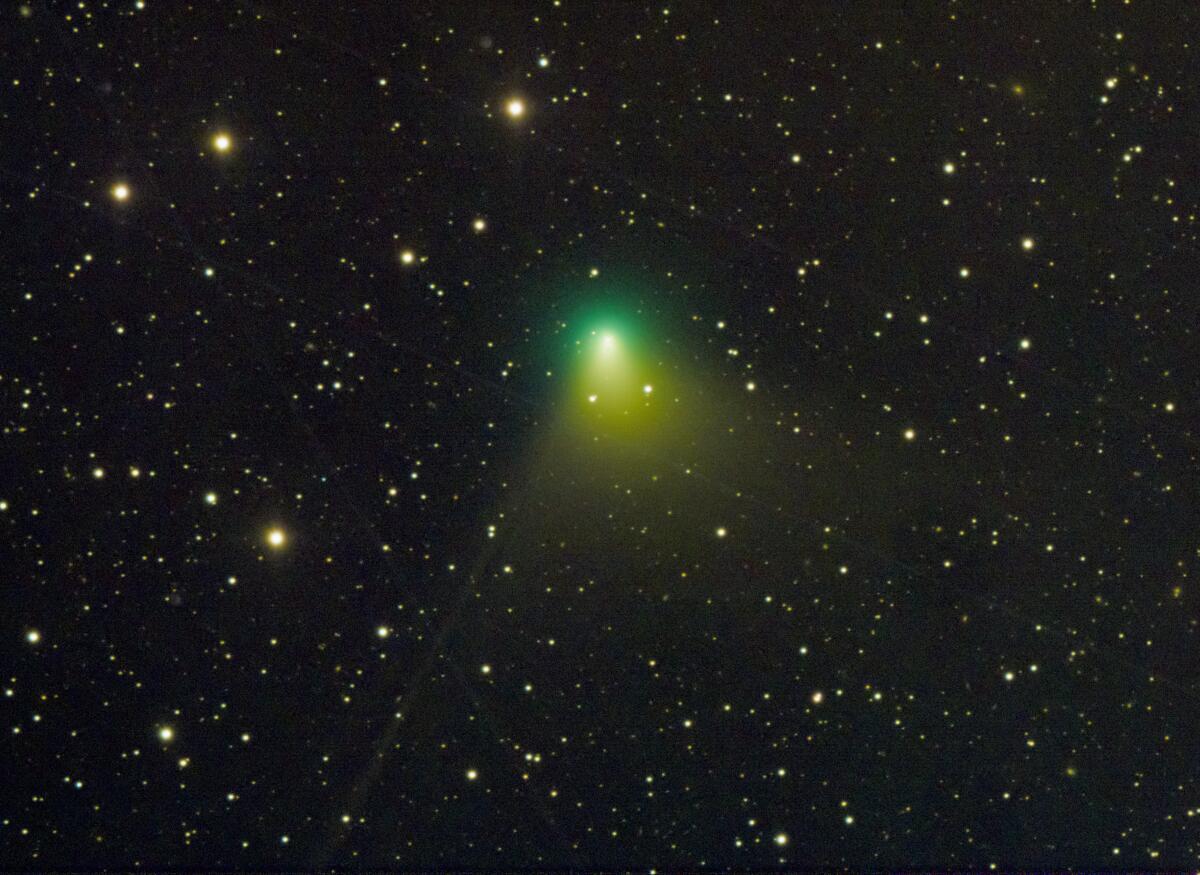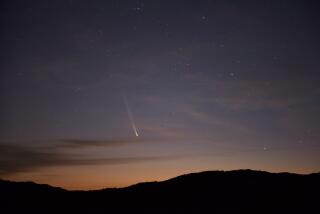A rare green comet is coming: Some suggestions on where to sky gaze

- Share via
A once-in-50,000-years green comet is passing through our solar system, but if you live in Los Angeles you’re unlikely to be able to spot it for yourself.
C/2022 E3 (ZTF) will be closest to Earth on Feb. 1 and may be “only just visible to the eye in dark night skies,” NASA says.
Discovered at the Zwicky Transient Facility at San Diego County’s Palomar Observatory in early March, the comet has been growing brighter as it approaches its perigee, or the closest point in its orbit to Earth.
When the time is right, especially on the mornings of Jan. 31, Feb. 1 and Feb. 2, those wishing to see the comet would do well to leave the light-polluted Los Angeles Basin.
“I’m quite doubtful that you’re gonna see it from downtown Los Angeles,” said Steven Flanders, public affairs coordinator for Palomar Observatory. “The background sky is so bright there.”
The comet should be “to the left of Polaris and about the same height,” he said, referring to the North Star. He was able to see its green glow Thursday morning through binoculars from the secluded observatory.
The comet releases carbon gas as it approaches the sun and warms up, causing the green glow effect.
Cities including Los Angeles switched to LED lights in recent years to save energy and money, worsening light pollution.
For celestial viewing, UCLA physics and astronomy lecturer Art Huffman suggests the following sites:
- Joshua Tree National Park
- Death Valley National Park
- Red Rock Canyon State Park east of Bakersfield
- Anza Borrego Desert State Park east of San Diego
Three of those four parks are listed on the International Dark Sky Assn.’s list of dark sky parks, selected for “possessing an exceptional or distinguished quality of starry nights,” per the association’s website. Two Southern California towns, Borrego Springs and Julian, are on the list of dark sky communities.
To watch virtually, one can watch a livestream of the comet provided by the Virtual Telescope Project.
More to Read
Sign up for Essential California
The most important California stories and recommendations in your inbox every morning.
You may occasionally receive promotional content from the Los Angeles Times.











